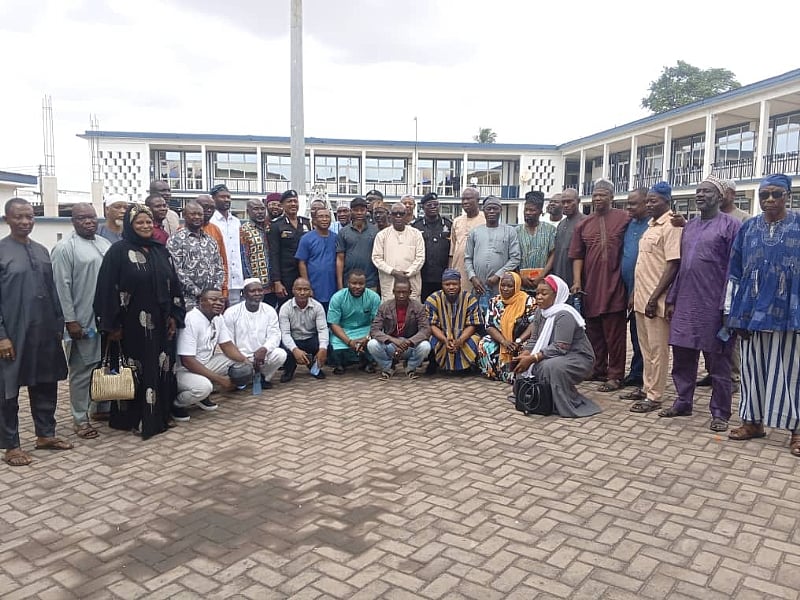The escalating conflict between the Kusaasi and Mamprusi factions, primarily centered in Bawku, recently threatened to spill over into the Ashanti Region, prompting swift intervention by the Regional Security Council (RSC). Following shootings in Asawase and the Asokore Mampong Municipality that resulted in fatalities, including a local chief and a 60-year-old man, security forces linked the violence to the Bawku conflict. Recognising the potential for further unrest amongst migrant communities from the affected areas residing in the Ashanti Region, the RSC initiated a mediation process to prevent the situation from deteriorating. This proactive approach aimed to contain the conflict and maintain peace within the region.
The RSC’s intervention involved the establishment of a seven-member mediation committee composed of representatives from various security agencies. This committee adopted a structured approach, beginning with separate meetings with the Kusaasi and Mamprusi factions to understand their perspectives and grievances. These initial engagements paved the way for a joint session held at the Ashanti Regional Police Command, where the two factions came face-to-face to discuss their differences and seek common ground. The culmination of this dialogue was the signing of a peace pact, a significant step towards de-escalation and peaceful coexistence within the Ashanti Region.
The mediation process, facilitated by the RSC, culminated in a formal agreement between the Kusaasi and Mamprusi factions. DSP Godwin Ahianyo, Head of Public Relations at the Ashanti Regional Police Command, outlined the rationale behind the RSC’s intervention, emphasizing the need to address the rising tensions and prevent the spread of the Bawku conflict into the Ashanti Region. The agreement, signed during a meeting at the Al-Asad Conference Hall at the Regional Police Headquarters, formalized the commitment of both groups to maintain peace and prevent the importation of the Bawku conflict into their communities in the Ashanti Region. The RSC’s prompt action underscored its commitment to maintaining regional stability and preventing inter-communal violence.
Leaders from both the Kusaasi and Mamprusi communities expressed their commitment to uphold the peace pact. Naaba Winyellesom Ndeego, Chairman of the Kusasi Chiefs Association of Ashanti Region, and Tufeiru, Ashanti Regional Vice Chairman of the Mamprusi Youth Association, publicly affirmed their dedication to peaceful coexistence. They emphasized that the Ashanti Region should not become a battleground for conflicts originating elsewhere, highlighting their shared interest in maintaining a peaceful environment conducive to business and community life. Their statements signaled a crucial turning point in the relationship between the two groups, emphasizing a shared desire for stability and mutual respect within the region.
The core objective of the peace pact was to prevent the Bawku conflict from taking root in the Ashanti Region. Both Kusaasi and Mamprusi leaders acknowledged the potential for the existing conflict to disrupt the peace and harmony within their communities in the Ashanti Region. They stressed the importance of resolving disputes peacefully and emphasized their commitment to viewing each other as brothers and sisters, rejecting the narrative of animosity and promoting a culture of understanding. This commitment to peaceful coexistence and mutual respect was a crucial element of the agreement, aiming to foster a sense of shared community and prevent the escalation of violence.
The peace agreement serves as a testament to the proactive approach taken by the Ashanti Regional Security Council to address the potential for escalating inter-communal violence. The signing of the pact signifies a commitment from both the Kusaasi and Mamprusi factions to resolve their differences peacefully and prevent the Bawku conflict from spilling over into the Ashanti Region. The RSC’s intervention, combined with the willingness of both factions to engage in dialogue and reach a mutually acceptable agreement, provides a framework for peaceful coexistence and underscores the importance of community-based solutions in conflict resolution. The agreement, while a significant step forward, requires ongoing commitment and collaboration from both groups to ensure lasting peace within the region. The security officials urged vigilance and encouraged community members to report any potential threats promptly to prevent further outbreaks of violence. This collaborative approach, combining community engagement with security vigilance, is crucial for the long-term success of the peace agreement and the maintenance of harmony within the Ashanti Region.


